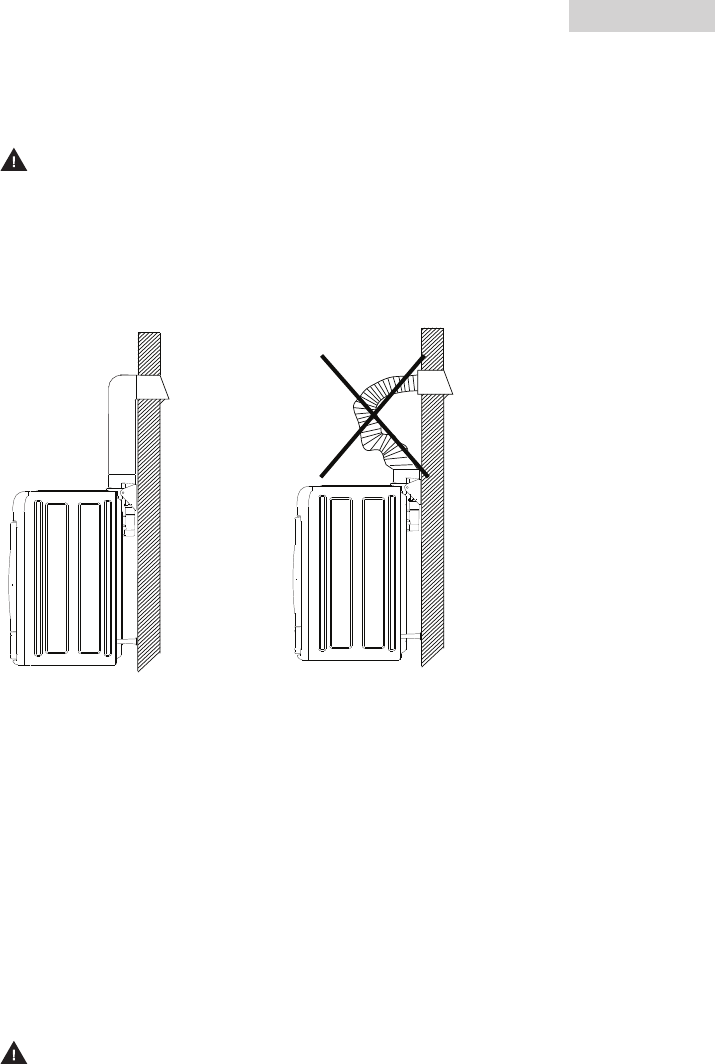
English
8
Venting The Dryer
Proper venting of the dryer is very important. Determine the best and safest
ducting for the dryer.
Exhaust Requirements and Maintenance.
Clothes dryer installation must be performed by qualified installer.1.
Install the clothes dryer according to the manufacturer’s instructions and local codes.2.
Do not install a clothes dryer with flexible plastic venting materials. If flexible metal 3.
(foil type) duct is installed, it must be of a specific type identified by the flexible duct
manufacturer as suitable for use with clothes dryers. Flexible venting materials are
known to collapse, be easily crushed, and trap lint. These conditions will obstruct
clothes dryer airflow and increase the risk of fire.
Clean old ducts before installing this dryer.4.
WARNING!
WARNING!
Outside
Vent
Correct Incorrect
Venting must conform to local building codes.•
Do not use thin plastic or foil ducting.•
Use 4 inches (10.2cm) diameter rigid or flexible metal duct (note: venting •
materials are not supplied with the dryer, and you should obtain the venting
materials necessary for proper installation at your local hardware store).
Position the Dryer such that the exhaust duct run is as short as possible. •
Make sure there is no more than 6 feet of exhaust ducting.
Clean old ducts before installing this dryer•
Never bend or collapse ducting flex hose. Use few elbows joints as needed.•
Use duct tape on all duct joints.•
Insulate ductwork that runs through unheated areas in order to reduce •
condensation and lint build-up on pipe walls.
To reduce the risk of fire and combustion, the dryer must be vented outdoors. Lint
accumulation can cause fires. Check and clean vents and ducting as often as possible.
PLEASE BE AWARE THAT FAILURE TO EXHAUST THE DRYER CORRECTLY WILL VOID THE
DRYER’S WARRANTY.


















